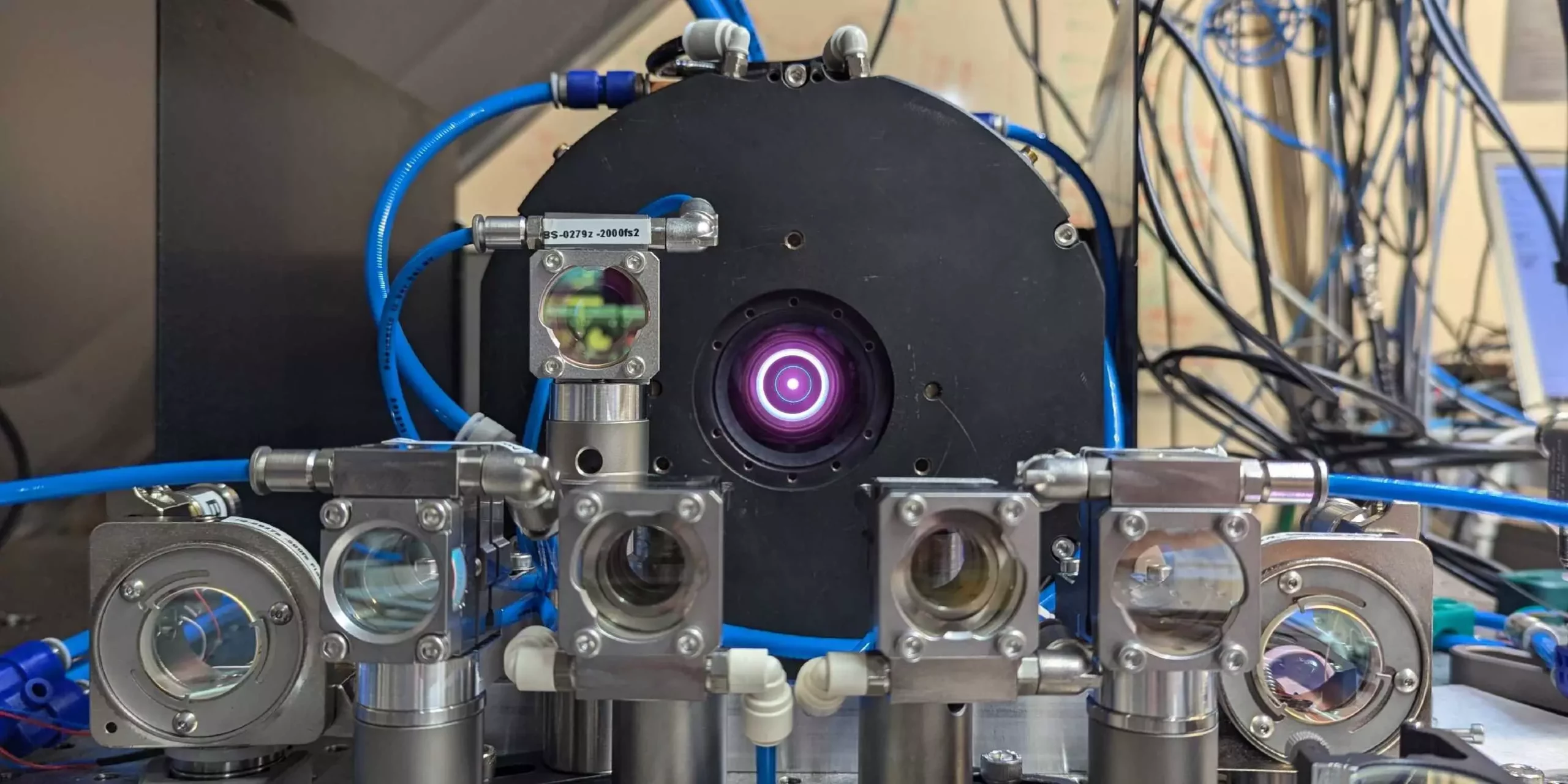The term “laser” often evokes images of channeled beams of light, widely recognized for their power and precision. Yet, within the scientific community and various industries, the demand spans not only for continuous light but also for brief, high-intensity bursts commonly referred to as short-pulse lasers. These pulses play a vital role in an array of applications, including the machining of materials and generating high-frequency harmonics, even reaching X-ray levels. Recent advances by a research team from ETH Zurich, under the guidance of Ursula Keller, have resulted in unprecedented achievements in this field, setting new standards for pulse power and duration.
Keller’s team has achieved a remarkable milestone by generating short laser pulses that possess an average power output of 550 watts, surpassing the previous record by over 50%. This significant increase not only positions them among the most powerful lasers yet but does so while maintaining an astonishingly short pulse duration of less than a picosecond—a millionth of a millionth of a second. To put the power into perspective, the peak power achieved is around 100 megawatts, theoretically equating to the energy required to temporarily operate 100,000 vacuum cleaners simultaneously. The findings, recently published in the journal Optica, demonstrate the continuous progress made in laser technology.
For over 25 years, Keller’s research group has painstakingly advanced the design of short-pulsed disk lasers, which utilize a thin crystal disk imbued with ytterbium atoms as the laser medium. Historically, the path to enhanced power levels has been fraught with challenges, often resulting in catastrophic failures within the laser components. Each setback, however, has led to valuable insights that improved the reliability and efficiency of these lasers, making them increasingly valuable in both scientific research and industrial applications.
The recent innovations that allowed this drastic improvement rested on two main strategies. The first involves a sophisticated arrangement of mirrors that enables light to circulate multiple times within the laser disk before being emitted through an outcoupling mirror. This strategy enhances amplification without compromising the laser’s stability. The necessity to keep the laser stable while achieving high power was a delicate balancing act that Seidel, a Ph.D. student in Keller’s lab, describes as a pivotal breakthrough.
Second, the centerpiece of the pulsed laser—known as the Semiconductor Saturable Absorber Mirror (SESAM)—is fundamental to producing the desired short pulses. Developed by Keller three decades ago, the SESAM’s unique property is that its reflectivity is contingent on the intensity of incoming light; the stronger the light, the more effectively it reflects. This characteristic enables the laser to naturally switch to emitting short, intense pulses instead of a continuous beam.
The journey to achieving such powerful pulses was not without complex technical hurdles. For instance, a critical challenge involved affixing a thin sapphire window to the SESAM mirror. This addition required careful design and execution to significantly enhance the mirror’s performance. The triumph of overcoming each obstacle brought palpable excitement to the research team, as witnessing the laser generate pulses of such unprecedented strength marked a major achievement in their ongoing quest for advancement.
Keller enthuses about the potential applications of these advanced short-pulse lasers, highlighting that they could pave the way for creating attosecond pulse lasers. Such lasers will open doors to new realms in precision measurement and exploration of fundamental scientific phenomena.
The cutting-edge pulse technology developed signifies a promising transition from traditional amplifier-based systems to laser oscillators, providing a more stable solution for precise applications. Keller anticipates that the advancements will not only enhance measurement capabilities but can also lead to groundbreaking developments in fields such as developing frequency combs in the ultraviolet to X-ray spectrum. This could revolutionize the creation of highly precise clocks, with potential implications for understanding the nature of fundamental physical constants.
Furthermore, using terahertz radiation created by these new lasers to probe and test materials opens up additional avenues for research and application, potentially impacting sectors from material science to biomedical research.
The achievements of Ursula Keller and her team at ETH Zurich mark a significant step forward in laser technology, particularly in the domain of short-pulse lasers. The remarkable increase in both power and pulse frequency sets a new standard, not just for scientific inquiry but also for practical applications across industries. As the research evolves, the implications of these advancements could reach far beyond current capabilities, fostering a broader understanding of light-matter interactions and further unlocking the mysteries of our universe.


Leave a Reply